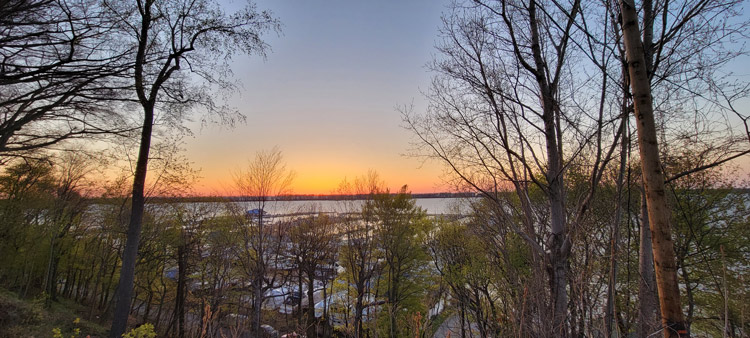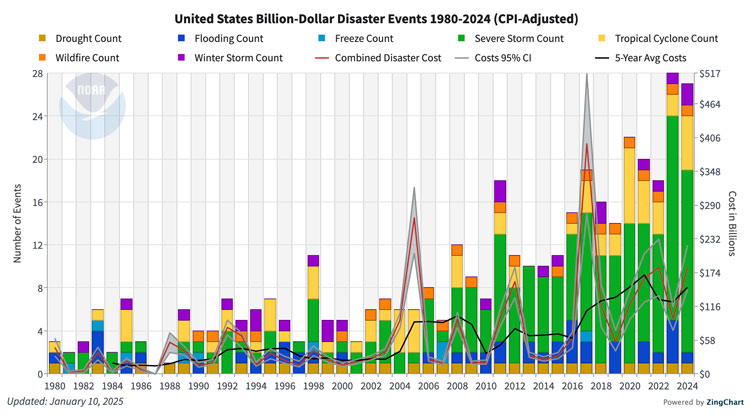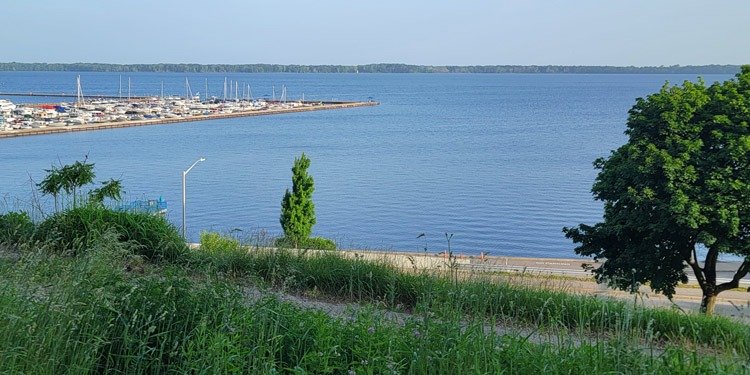Is Erie, PA, Considered a Climate Haven?
There is a variety of conventional reasons why people move: career changes, affordability, proximity to family and friends, etc. But as Earth’s climate changes, the catalysts for moving now include wildfires, droughts, heat waves, and other extreme weather events. In fact, a new survey by Forbes Home found that almost a third of respondents cited worsening weather conditions as a reason to move.
With roughly one in three people needing to find a new home due to climate change, it raises the question: Where are all these people moving to? As it turns out, many are heading to areas that some climate scientists suggest are “climate havens.” In this article, Maleno explores precisely what a climate haven is, the cost of climate disasters, and Erie's vulnerability to climate change.

What Are Climate Havens?
Climate havens are locations that researchers hypothesize will be less impacted by the effects of climate change, making them potential refuges for people displaced by extreme heat, rising sea levels, droughts, wildfires, and other extreme weather events.
Key characteristics of a climate haven often include:
- Mild and stable temperatures
- Abundant freshwater resources
- Low risk of natural disasters
- Reliable infrastructure
- Capacity for population growth
In the context of the U.S., some experts have identified places in the Great Lakes region, Pacific Northwest, and parts of New England as potential climate havens—including Erie, PA—due to their cooler climates, freshwater access, and lower exposure to extreme weather events. However, it must be noted that no place is completely unaffected by climate change, nor have researchers yet defined precise criteria for designating climate havens.
The Cost of Change
From 1980 to 2024, 403 confirmed weather/climate disaster events in the United States exceeded $1 billion in losses (Consumer Price Index Adjusted). These events included:
- 32 drought events
- 45 flooding events
- 9 freeze events
- 203 severe storm events
- 67 tropical cyclone events
- 23 wildfire events
- 24 winter storm events
What is particularly striking about this information is that the annual average for 1980–2024 is 9.0 events, but the five-year average from 2020 to 2024 is a staggering 23.0.

Could Erie, PA, Be A Climate Haven?
As noted in the Fifth National Climate Assessment (now only accessible through the Wayback Machine), no place in the United States is entirely safe from climate change. What’s also clear is that a place needs more than natural resources to provide refuge. It requires strong environmental policies, innovative urban design and development, and proactive decision-making.
All that said, there are areas that are safer than others, and parts of Erie are looking especially promising. But the details are important here.
Perhaps the best tool to highlight these environmental nuances is the U.S. Climate Vulnerability Index (CVI). The CVI displays historical and projected environmental, social, economic, and infrastructural impacts of climate change on communities through a national vulnerability percentile (1 being the least vulnerable and 100 being the most vulnerable).
It suggests that Erie, Erie County, and Northwestern Pennsylvania have a complex composition of low, average, and high-vulnerability communities, some of which contradict conventional climate haven thinking (e.g., rural areas are safer than urban ones, freshwater reduces risk, etc.).
From a countywide standpoint, Erie County is at the 44th national vulnerability percentile, which earned it an “average vulnerability rating.” But, should you zoom in closer, large swaths of the City of Erie and Millcreek show “lower vulnerability,” making them two of only a dozen areas in the entire state of Pennsylvania below the 40th percentile.
So, could Erie be a climate haven? No definitive criteria give a clear yes or no. But with an average-to-lower vulnerability rating on the CVI, it’s fair to say that Erie could be considered a climate haven.

Will People Move To Erie?
The impacts of climate change will be felt everywhere, climate haven or not. But with one in three 18 to 41-year-olds citing climate change as a reason to move, we’re likely to see an increase in Erie’s population in the coming years.
In a 2021 study titled, The Future of Work in Erie County, The Jefferson Educational Society’s Civic Leadership Academy noted that “Erie County is an ideal place to live and work as an evolving climate brings hotter, more volatile weather conditions across the globe. As an increasing number of people can work remotely, Erie can serve as a climate haven.”
Finding a Home in Erie
Erie is more than just a climate haven. It’s a city with a bustling entrepreneurial sector, one of the largest bodies of freshwater in the United States, picturesque seasons, an ever-growing foodie scene, and economic development happening everywhere you turn.
Whether you're planning ahead or ready to relocate, Maleno welcomes you. If you're curious about what life in Erie could look like for you, reach out to our team. Let’s discuss your goals and find a home that makes sense both now and in the future.





